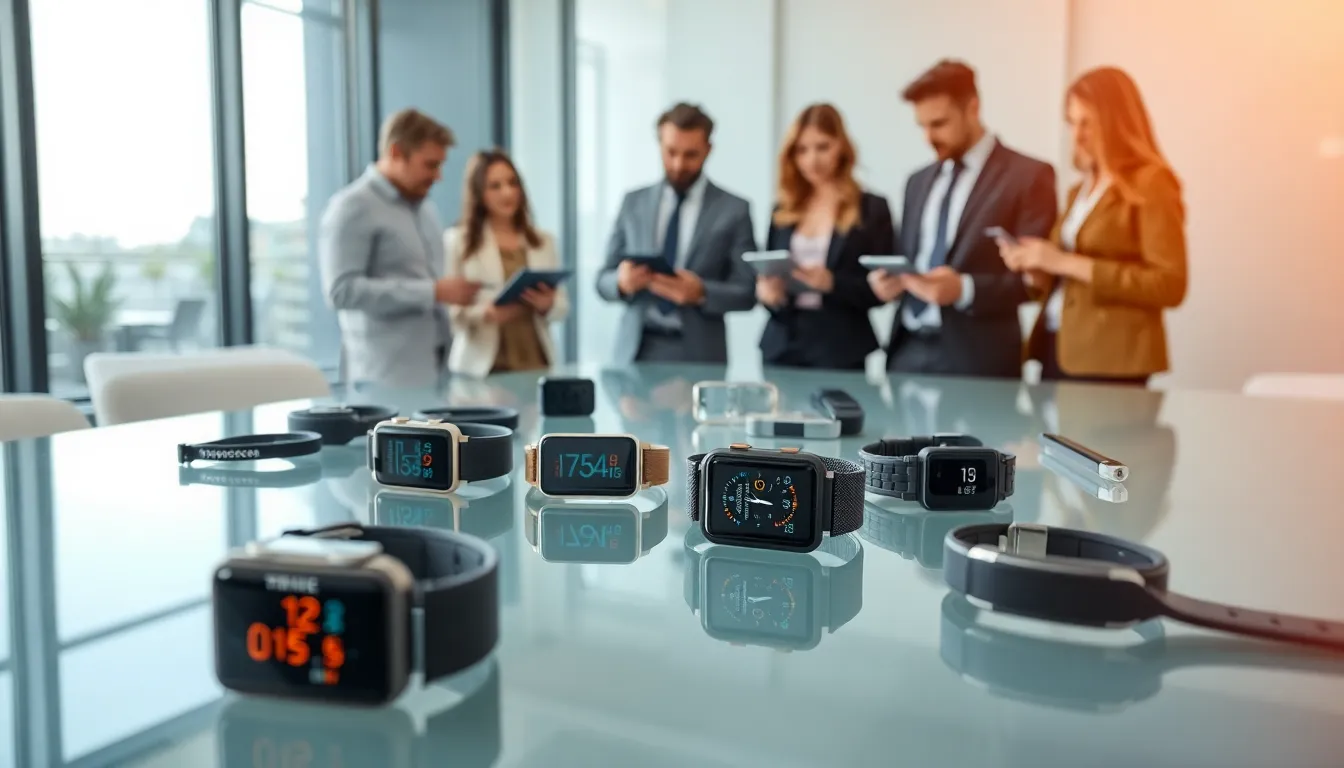Table of Contents
ToggleHave you ever stopped to wonder what exactly makes wearables so captivating? Is it the idea that your wrist can remind you about yoga class or that your glasses can translate a foreign language on the fly? The truth is, wearables represent a significant leap into a future where technology and daily life meld seamlessly. In this text, we’re diving deep into the intriguing world of wearables, so buckle up and prepare for an enlightening journey.
The Definition of Wearables

Wearables, in their simplest form, are devices that you can wear, ranging from watches to clothing integrated with technology. These gadgets come equipped with advanced sensors and software, enabling them to collect and analyze data about the wearer’s health, fitness, and overall activities. While the term encompasses various devices, they all share a common trait: they are designed to be worn on the body.
Consider smartwatches, for example. Not only do they tell time, but they can monitor heart rates, track workouts, and even provide notifications from smartphones. They represent just one way that wearable technology has permeated our daily lives.
Types of Wearables
The landscape of wearables is diverse, featuring several types designed to cater to different needs. Here are some of the most common categories:
Smartwatches
Typically worn on the wrist, these devices provide notifications, fitness tracking, and a plethora of apps right at your fingertips. They act as a mini smartphone for those who prefer convenience.
Fitness Trackers
Ideal for sports enthusiasts, fitness trackers monitor physical activities, sleep quality, and many also track heart rates. They offer insights that can help improve overall well-being.
Smart Glasses
Think of the possibilities. Smart glasses can provide augmented reality experiences, display notifications, or even assist in navigation without pulling out a phone.
Health Monitors
These can range from devices that track specific metrics, like glucose levels for diabetics, to wearables designed to monitor vital signs in real-time.
Smart Clothing
Yes, clothing has gone digital. Some outfits now come embedded with sensors that can monitor posture or body temperature, making them a game-changer for athletes.
How Wearables Work
The inner workings of wearables might seem advanced, but they boil down to a few key components. At their core, wearables use sensors to gather data about the individual, which is then analyzed through built-in software to produce actionable insights.
For instance, a fitness tracker employs accelerometers to count steps and a heart rate monitor to measure beats per minute. This data is transmitted via Bluetooth to a connected device, such as a smartphone, where users can view trends and receive notifications.
Plus to measuring activity, advanced wearables often use biofeedback mechanisms. This means they can adjust their functions based on collected data, helping users optimize their conduct. Imagine your smartwatch suggesting a brisk walk after detecting prolonged inactivity, that’s technology adapting to individual needs.
Benefits of Wearable Technology
Adopting wearables can lead to multiple advantages across various sectors. Here are some standout benefits:
Health Monitoring
Wearables often act as continuous health monitors, allowing individuals to track metrics without manually logging data. This fosters a proactive approach to health management.
Enhanced Productivity
With notifications accessible directly on the wrist, individuals can stay organized and focused throughout the day. This integration helps reduce distractions that often come from reaching for a smartphone.
Improved Fitness
By tracking activities and setting fitness goals, wearables can motivate individuals to stay active. They can help transform an everyday routine into an exciting challenge.
Data Collection
Wearable devices can collect volumes of data over time, leading to significant insights. This data can be beneficial in fields like sports science, providing coaches and athletes with concrete information on performance.
Challenges and Considerations
Even though their benefits, wearables come with challenges and considerations. Privacy and data security are among the primary concerns. With devices constantly collecting data, how safe is that information? Users must be wary of how their data is stored and utilized.
Also, the longevity of battery life can be a cumbersome aspect. Some devices require frequent charging, which can lessen the appeal as even advanced tech is rendered useless without power.
Finally, while wearables can enhance fitness and productivity, there’s a risk of over-reliance. Users risk forgetting about the importance of mental health and mindfulness amidst all the data-driven goals.
The Future of Wearables
The future of wearables looks promising, with advancements emerging all the time. Integration with artificial intelligence can result in smarter wearables that adapt continuously to the user’s needs. Imagine wearables capable of predicting health issues before they arise and providing actionable insights in real time, sounds futuristic, right?
Also, the potential merging of wearables with smart home technologies could lead to fully interconnected living. Envision your wearable communicating with your home to adjust lighting or temperature based on your mood or current activity. The possibilities seem endless.




